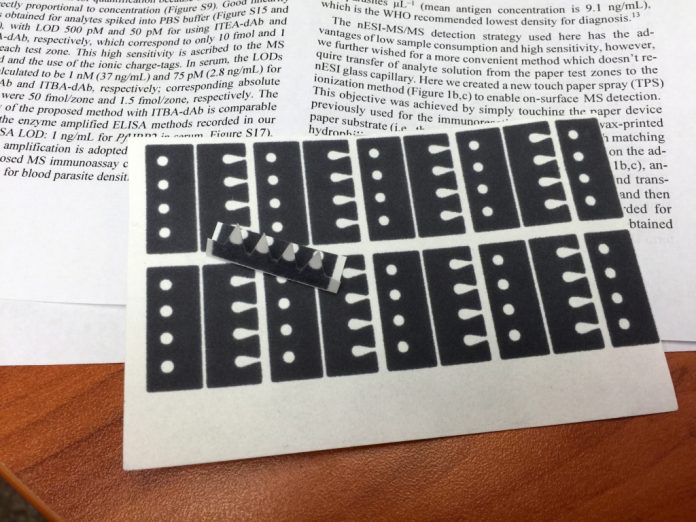
Malaria remains to be the number one disease that causes death in Africa with about a million dying from Malaria every year 90% of these cases occur in sub-Saharan Africa. A huge percentage of the casualties are of children below 5 years old. Aside from human casualties, Malaria is costing Africa up to $12 billion each year. A major reason for the alarming figures is because people live far away from hospitals making it difficult for them to have tests and get diagnosed earlier. A simple piece of paper may change all this.
Chemists at the Ohio State University are developing a simple way to test for Malaria and all it needs is a piece of paper. Abraham Badu-Tawiah, originally from Ghana aims in providing a means to accurately diagnose people who live far away from a hospital. Badu-Tawiah believes that early diagnosis will allow the patient to take appropriate measures before it is too late. How will this be possible?
The patient will simply need to put a drop of blood in the reservoir contained in the piece of paper, fold it, place it in an envelope and mail it to the nearest lab. There the sample will be tested and results sent back. The paper works by using a special wax ink to keep the blood from spreading. Ionic probes that are able to identify certain antibodies which in turn will be indicators of certain diseases are also contained in the paper. The paper can remain usable for up to a month and is resistant to light, temperature and humidity making it ideal for sub-Saharan Africa.
VIDEO: SUB-SAHARAN AFRICA $12 BILLION ANNUAL LOSS TO MALARIA
When the lab receives the paper, it is dipped in a solution of ammonia. The layers are separated and it is tested with a mass spectrometer which interprets the biomarker to determine whether a person has Malaria or not. The potential of this technology is huge with possible usage in detecting certain cancers. According to the researchers behind the device, any disease that causes the body to produce antibodies is testable. Badu-Tawiah hopes to be able to test for all the different cancers in time.
With the price of 50 cents per piece, the main goal of the paper is to make testing both accessible and affordable to those in rural areas. This small piece of paper may in effect connect the rural areas to the big cities in a very inexpensive way. Sometimes, it is the small things that can make the greatest difference.



























